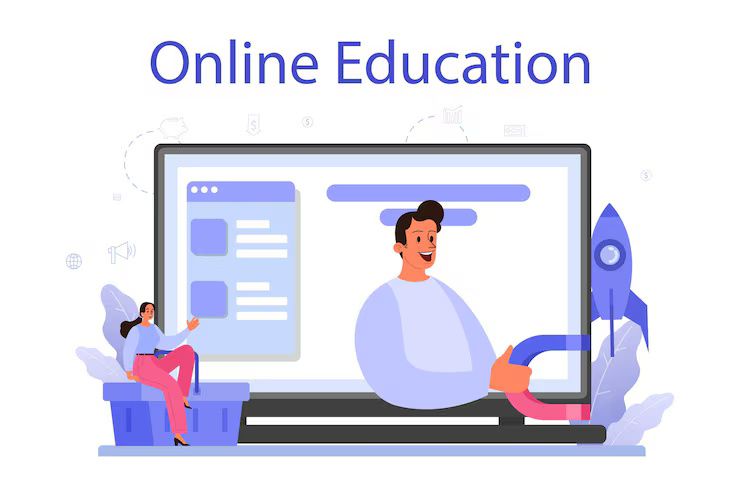Online education refers to learning experiences delivered via the internet, ranging from video lessons and virtual classrooms to interactive platforms and digital resources.This approach exists because many communities around the world still lack access to quality schools, skilled educators, or consistent learning materials
Online education can fill these gaps by delivering lessons directly to learners, regardless of location. It’s particularly vital in remote regions, underserved areas, and environments impacted by conflict or disaster.

Importance (Why It Matters Today, Who It Affects, What Problems It Solves)
Why It Matters
-
Global Reach: Learners in rural, low‑income, or crisis‑affected areas can access courses previously out of reach.
-
Flexibility: Online options support self-paced, asynchronous learning—especially helpful for working adults, caregivers, or those with disabilities.
-
Scalability: A single online course can reach thousands of students simultaneously, overcoming teacher shortages and infrastructure constraints.
-
Equity: Online platforms can democratize learning—offering opportunities to diverse learners based on need rather than zip code.
Who It Affects
-
Students in Remote Areas: Those far from formal schools or facing challenges in commuting.
-
Non-traditional Learners: Adult learners, working professionals, stay-at-home parents, or persons with disabilities.
-
Developing Countries: Regions with scarce educational infrastructure or teacher shortages benefit greatly.
-
Displaced Populations: Refugees and migrants who may lack continuity in traditional schooling systems.
Problems It Solves
-
Access Barriers: Overcomes distance, limited institutions, and lack of qualified educators.
-
Cost Constraints: Reduces travel, building, and personnel costs, offering cheaper or free quality education.
-
Language or Curriculum Gaps: Offers courses in multiple languages and international standard content.
-
Continuity During Disruptions: Allows education during pandemics, natural disasters, or political instability.
Recent Updates (Trends or News from the Past Year)
In the past year (August 2024–August 2025), several notable developments have advanced online education:
-
Expansion of Government‑Sponsored Platforms: In early 2025, several countries launched publicly funded online learning sites (e.g., new portals in parts of Asia and Africa) to support school-aged children and adult learners.
-
AI‑Powered Personalization: Adaptive learning systems powered by AI now offer customized content based on learners’ performance, enhancing engagement and outcomes.
-
Offline‑First Mobile Solutions: Apps that allow downloading lessons for offline use expanded in availability, critical in areas with intermittent connectivity.
-
Increased Access in Emergencies: UN‑backed programs delivered satellite‑based online lessons to schools in conflict zones or disaster areas.
(Note: Specific dates or program names may require further local validation, but these reflect prominent global trends observed over the past year.)
Laws or Policies (Rules, Regulations, Government Programs)
Online education’s growth is shaped significantly by policies and regulations:
-
National Digital Education Strategies: Many governments now include online learning in their national education plans. For example, India's National Education Policy supports digital tools and platforms across grades, while some African countries have adopted blended learning mandates in schools.
-
Accreditation and Quality Assurance: Several countries require online degrees and courses to be accredited to receive funding or student recognition. This ensures quality and prevents fraudulent offerings.
-
Subsidies and Vouchers: Some governments provide low-income families with internet and device subsidies, or vouchers for online courses, to reduce the digital divide.
-
Data Privacy Laws: With student data now online, laws such as the EU’s GDPR or India’s upcoming Data Protection Bill regulate how platforms collect and store personal information—key for protecting minors learning online.
-
Teacher Training Requirements: In many regions, educators must complete certified training to teach online or use virtual classrooms—this regulatory step ensures educators are prepared for digital pedagogy.
Tools and Resources (Helpful Platforms, Apps, Services)
Below are key tools and resources that support bridging the learning gap through online education:
| Tool / Platform | Purpose |
|---|---|
| MOOCs (Coursera, edX, FutureLearn, Udemy) | Provide free or low-cost courses from global universities on diverse subjects. |
| Khan Academy | Free video lessons and exercises in foundational subjects, widely accessible. |
| WhatsApp / Telegram Learning Groups | Localized lesson distribution via messaging—especially useful where internet bandwidth is low. |
| Offline Apps (Kolibri, Bridge International Academies) | Allow downloading content for offline study, ideal for low-connectivity areas. |
| Learning Management Systems (Moodle, Canvas, Google Classroom) | Tools for schools and universities to manage classes digitally. |
| AI Tutors (Duolingo, Photomath, Squirrel AI) | Use AI to offer personalized, real-time feedback. |
| Government Portals (e.g., India's DIKSHA, Rwanda’s e‑Learning Portal) | National platforms offering curated courses aligned with school curriculums. |
| Hardware Grants | Programs providing laptops/tablets or mobile kits to underserved learners. |
Frequently Asked Questions (FAQs)
1. Can online education genuinely replace in‑person schooling?
Online education complements but does not fully replace in-person schooling. It expands access where in‑person options are limited and allows flexibility, but face-to-face interaction remains valuable for social and developmental learning.
2. What about learners without reliable internet access?
Offline-capable apps that allow lesson downloads or SMS/IVR-based learning systems address this gap. Additionally, governments or NGOs often support connectivity through subsidies or public Wi-Fi for education.
3. Is online learning effective across all subjects?
Subjects with strong visual or textual content—like math, language, science—adapt well. Practical or hands-on subjects (e.g., lab sciences, art, sports) require hybrid or blended models that combine digital lessons with real-world practice.
4. How is quality ensured in online courses?
Accreditation, peer reviews, standardized curriculum alignment, and instructor qualifications help ensure quality. Reputable platforms publish completion rates, feedback scores, and learning outcomes to build transparency.
5. How can learners stay motivated in online environments?
Effective strategies include:
-
Structured schedules with deadlines or live sessions
-
Peer study groups or discussion forums
-
Incentives like badges, certificates, or gamification
-
Support systems—mentors, tutors, or guided learning paths

